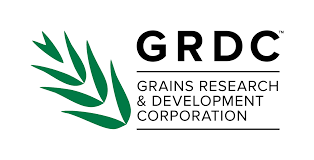


Evaluating Deep Sowing of Oats in WA Production Systems
Key Messages
- To support oat producers throughout WA to understand the potential of deep sowing oats early into stored moisture to utilise early season rainfall events or offset late seasonal breaks.
- To investigate oat varieties, suitable paddocks, and sowing depths when the seasonal conditions are optimal for deep sowing. To support producers to understand the risks involved in this strategy.
- To provide resources to oat producers that will demonstrate how to modify machinery and support understanding the potential for wear and tear, and costs of sowing at depth.
Summary
There has been a trend for increasing summer rain and later autumn sowing breaks throughout the WA wheatbelt. Potential utilisation of soil moisture stored below conventional sowing depths allow growers to potentially increase yield while mitigating abiotic risk. Oat seedlings emerge by elongation of both the mesocotyl and coleoptile so oats can be sown deeper than wheat and barley. Long mesocotyls and coleoptiles in oats would permit deep sowing into subsoil moisture stored from summer rains; enabling earlier germination and crop growth to occur under optimal conditions especially for longer-season varieties.
Although oats are not completely frost tolerant and can get frosted, they are less likely than wheat or barley. Therefore, sowing oats at depth when moisture is available would also potentially provide a risk mitigation opportunity in frost-prone areas. To better understand the fit of deep-sown oats in their production systems, growers require knowledge of the depths at which oats can be sown and the agronomic impacts of seeding at depths below those currently recommended. Growers also need to be provided with information on potential changes to machinery that may be required to facilitate the deeper sowing of oats.
Facey Group is conducting three seasons of small plot field trials in the Kwinana West and Kwinana East port zones in conjunction with Merredin and Districts Fram Improvement Group (MADFIG), sowing commercial oat varieties (or those close to release) into moisture at depth earlier than conventional sowing times. Soil temperature and mesocotyl and coleoptile lengths will be recorded for the different varieties sown at varying depths. Observations will be made of crop emergence, plant vigour, capacity to compete with weeds, potential impact of root diseases and interactions with yield. Potential impact of herbicides on crop safety across sowing depths and nutrition placement will also be examined.
The data gathered from the field trials will be used to inform growers of potential changes to seeding machinery anticipated to facilitate deeper sowing of oats and placing fertiliser appropriately for the sowing depths tested.
Further Information
Project Funding: GRDC
Project Lead: Facey Group
Project Collaborators: MADFIG
Project Start Date: March 2024
Project End Date: May 2027





